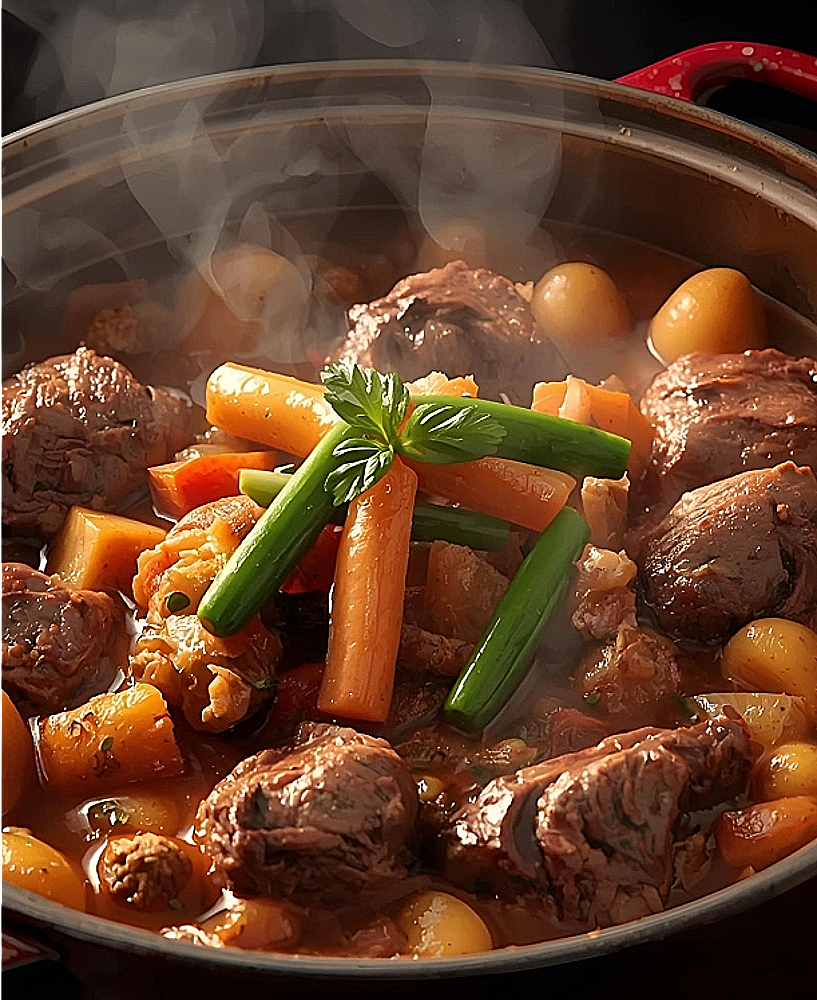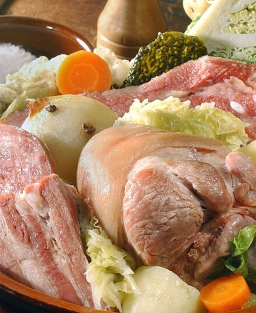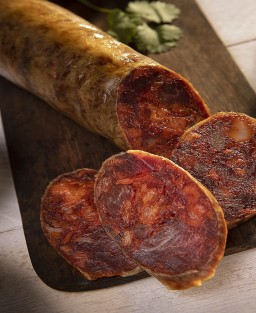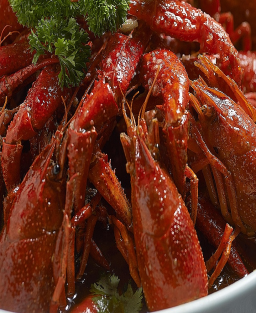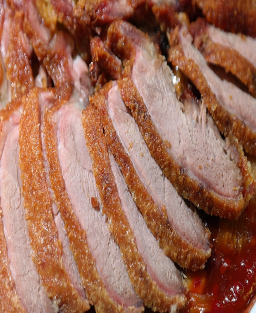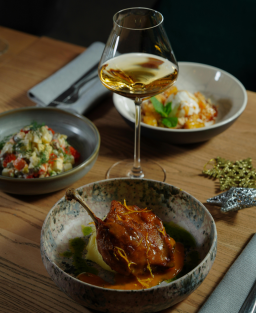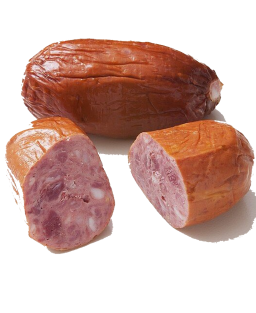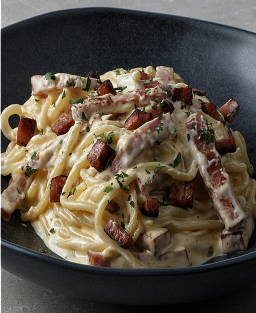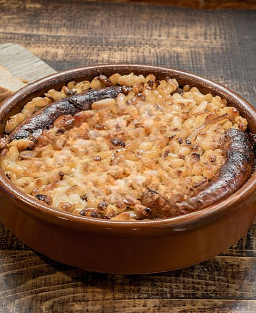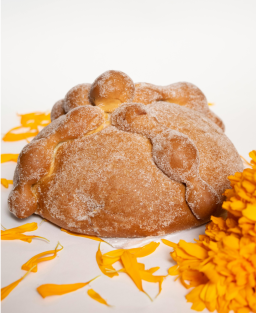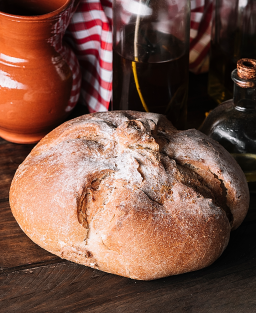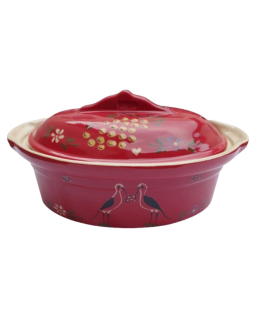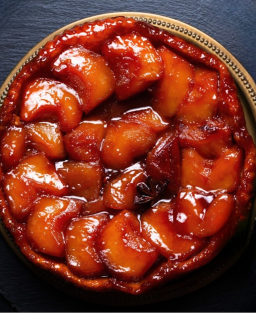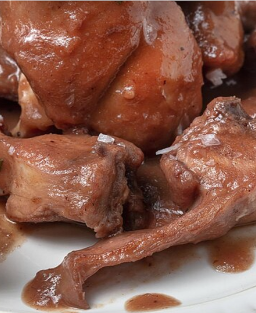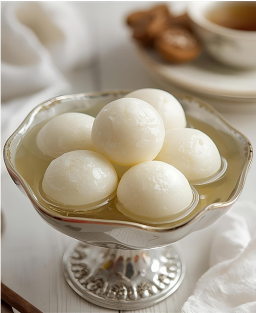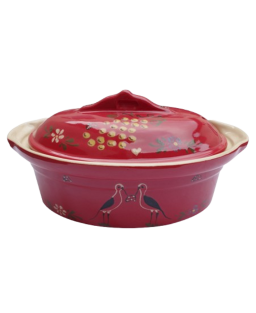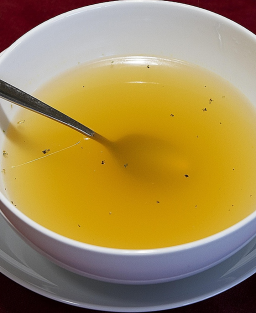Historical Recipe of Lesdiguières’ Marmite, Festive and Convivial Wedding Dish from the Dauphiné
Historical Recipe of Lesdiguières’ Marmite, Festive and Convivial Wedding Dish from the Dauphiné
Anecdote
« En Daufinat, un bon vin e ’na marmita plena fan dançar la taula » — an old Dauphiné saying meaning: “With good wine and a well-filled marmite, the table starts to dance.”
Legend
It is said that during a wedding banquet in the 16th century, the Duke of Lesdiguières was so impressed by the marmite served to him that he had the recipe recorded in his archives. It was even said that the aroma of the dish spread to nearby streets, attracting a crowd of curious onlookers…
Meta-description
Discover the historical recipe of Lesdiguières’ Marmite, a 16th-century Dauphiné wedding dish made with meats, vegetables, and wines.
Required Utensils
-
Large cast-iron pot (military or communal type)
-
Large stainless steel ladles and skimmers
-
Butcher tongs for handling large pieces
-
Deep serving dishes of ceramic or enameled cast iron
-
Butcher knives, cutting boards
Country / Region
-
Country: France
-
Region: Dauphiné (current departments of Isère, Hautes-Alpes, and Drôme)
-
Recipe inventor: initially transmitted orally during a banquet in the presence of the Duke of Lesdiguières (16th century), written and codified in the 20th century
-
Codified recipe: Yes (20th century)
-
Codified specifications:
-
Meats: pork feet, veal heads or shanks, larded beef, whole boiled poultry
-
Vegetables: carrots, turnips, rutabagas, cabbages, studded onions, garlic, herbs
-
Liquids: red and white wine, meat juice, tomato coulis (optional), cognac (optional)
-
Cooking: slow and long, minimum 4 hours, covered pot
-
Service: meats and vegetables presented in large pieces on platters, topped with filtered juice
-
-
-
Recipe evolution:
Lesdiguières’ Marmite, initially conceived as a monumental dish for aristocratic banquets, was adapted for family tables and guild meals.-
Quantities were reduced.
-
Veal heads can be replaced with shanks for convenience.
-
Number of poultry adjusted according to guests.
-
Addition of tomatoes, mushrooms, and cognac is a modern adaptation to enrich flavor and presentation while preserving the convivial and sumptuous spirit of the original dish.
-
Historical Background
Lesdiguières’ Marmite is named after François de Bonne, Duke of Lesdiguières (1543–1626), the last Constable of France, Marshal of France, and a major military figure in the Wars of Religion. Born in Saint-Bonnet-en-Champsaur, he was deeply attached to his region, the Dauphiné.
According to accounts, this recipe was served at a 16th-century wedding banquet attended by the duke. The lavish and memorable feast was recorded in local chronicles and rediscovered in the 20th century by regional gastronomy historians.
The dish exemplifies Dauphiné festive cuisine:
-
Abundance of meats (pork, beef, veal, poultry)
-
Use of local wines (robust reds and dry whites)
-
Generous vegetables and aromatics
-
Long, slow cooking in a large covered pot
Over the centuries, the recipe was adapted:
-
18th century: appears in some municipal banquets
-
19th century: becomes rare but remains cited as a dish of collective memory
-
20th century: gastronomic guilds and local societies revived it as a symbol of convivial Dauphiné
Lesdiguières’ Marmite – Historical 16th-Century Recipe
Recipe Description
Lesdiguières’ Marmite is a monumental stew designed for large noble banquets.
It consists of pork, veal heads, and larded beef, arranged in successive layers in a large pot over a base of bacon. Vegetables—carrots, turnips, rutabagas, cabbages, studded onions, and garlic heads—are placed in the center with aromatic herbs and spices.
Everything is moistened with red and white wine and slowly cooked for several hours.
At the end of cooking, whole boiled poultry, mushrooms, reduced meat juice, and a splash of verjuice or vinegar are added to enhance the flavors.
The dish is served on large platters, with filtered juice poured over the meats and vegetables. Each guest serves themselves freely, in a convivial and sumptuous spirit.
Ingredients (historical version for 50 guests)
-
20–30 slices of bacon
-
40 whole pork feet
-
10 bundles of fresh pork rind
-
2 blanched veal heads, prepared and tied
-
15 kg larded beef (culotte)
-
Salt, pepper, nutmeg
-
80 carrots cut into quarters
-
50 turnips or rutabagas (primitive version, no tomatoes)
-
12 onions studded with 4 cloves each
-
3 whole heads of garlic
-
15 bay leaves
-
1 bunch of parsley
-
10 bottles of robust red wine
-
6 bottles of dry white wine
-
8 whole boiled poultry
-
5 kg mushrooms (optional in modernized version)
-
Reduced meat juice
-
Verjuice or vinegar for acidity
Preparation
-
Assembling the Marmite
-
Choose a very large pot suitable for the quantity.
-
Line the bottom with bacon slices.
-
Around the edges, layer without cutting: whole pork feet, bundles of pork rind, tied veal heads, and larded beef pieces.
-
Season with salt and pepper between each layer.
-
Adding Vegetables and Aromatics
-
Place the vegetables in the center, whole or roughly split: carrots, turnips, rutabagas, cabbages, studded onions, and garlic heads.
-
Add herbs: parsley, bay, sage.
-
Sprinkle with nutmeg.
-
Moistening
-
Pour red and white wines over everything.
-
Cover and cook on very low heat for at least 4 hours.
-
Finalization
-
Remove aromatics (herbs, onions, garlic).
-
Add whole boiled poultry.
-
Incorporate reduced meat juice to bind the dish.
-
Add a splash of verjuice or vinegar for acidity.
-
Serving
-
Arrange meats and vegetables on large platters, whole or in large pieces.
-
Generously pour filtered juice over them.
-
Serve in a convivial banquet style, allowing each guest to help themselves generously.
Historical Note
Unlike modern practices, meats and vegetables were not cleaned or finely cut: pieces remained whole and massive to display abundance. Carving was often done at the table by a maître d’hôtel or kitchen officer.
Comparative Table: Primitive vs Modern Codified Version
| Element | Primitive Recipe (16th century) | Modern Codified Version (20th century) | Remarks |
|---|---|---|---|
| Meats | Whole pork feet, tied veal heads, larded beef, whole boiled poultry | Same base but sometimes cut or pre-cooked for easier service | Modern version favors practicality |
| Cleaning / Cutting | Meats and vegetables not cleaned or cut | Some meats and vegetables trimmed or cut | Primitive version maintains 16th-century banquet style |
| Vegetables | Carrots, turnips, rutabagas, cabbages, studded onions, whole garlic | Carrots, tomatoes, mushrooms, studded onions, garlic, sometimes leeks | Tomatoes and mushrooms are a modern adaptation |
| Spices / Herbs | Parsley, bay, sage, nutmeg, pepper | Parsley, bay, nutmeg, pepper | Basic spices remain unchanged, respecting tradition |
| Liquids | Red and white wine, splash of verjuice or vinegar | Red and white wine, meat glaze, tomato coulis, cognac | Cognac and coulis add intensity and modernity, absent in 16th century |
| Cooking | Long, slow cooking at low heat, covered pot | Same but with more precise control (thermometer, modern oven if needed) | Technique faithful; modernity adds precision |
| Service | Large platters, whole meats and vegetables, self-service | Sometimes more refined presentation, cut meats, filtered juice poured | Modern version more visually “gastronomic” |
| Spirit / Goal | Sumptuous and convivial banquet, abundance, prestige | Conviviality and flavors adapted to contemporary taste | Historical connection preserved but presentation modernized |
Variants
-
Reduced version for 15 guests: 6 pork feet, 1 veal head, 4 kg beef, 2 poultry, 2 bottles red wine, 1 white, 300 g mushrooms
-
19th-century bourgeois version: removal of offal, addition of truffles or foie gras
-
Modern version: veal shank and farm chickens, reduced cognac
Tips and Advice
-
Prepare the day before to better harmonize flavors.
-
Use quality wines (Northern Côtes-du-Rhône).
-
Never boil too hard; maintain gentle simmering.
Serving
-
Rustic: large communal platters in the center of the table
-
Gastronomic: sliced meats, presented in deep plates with juice
Recommended Wines and Drinks
-
Red wine from the Rhône Valley (Côte-Rôtie, Crozes-Hermitage)
-
White wine from Savoie (Roussette, Apremont)
-
Popular alternative: local Dauphiné wine served in a jug
Nutritional Information (indicative / 500 g portion)
-
Energy: 950 kcal (3980 kJ)
-
Fat: 60 g
-
Carbohydrates: 18 g
-
Protein: 80 g
-
Fiber: 6 g
-
Allergens: sulfites (wine, cognac), possible gluten from lard
-
Possible adaptations: lighter version with less fatty meat (replace pork feet with shank), alcohol-free (veal stock instead of wine)







